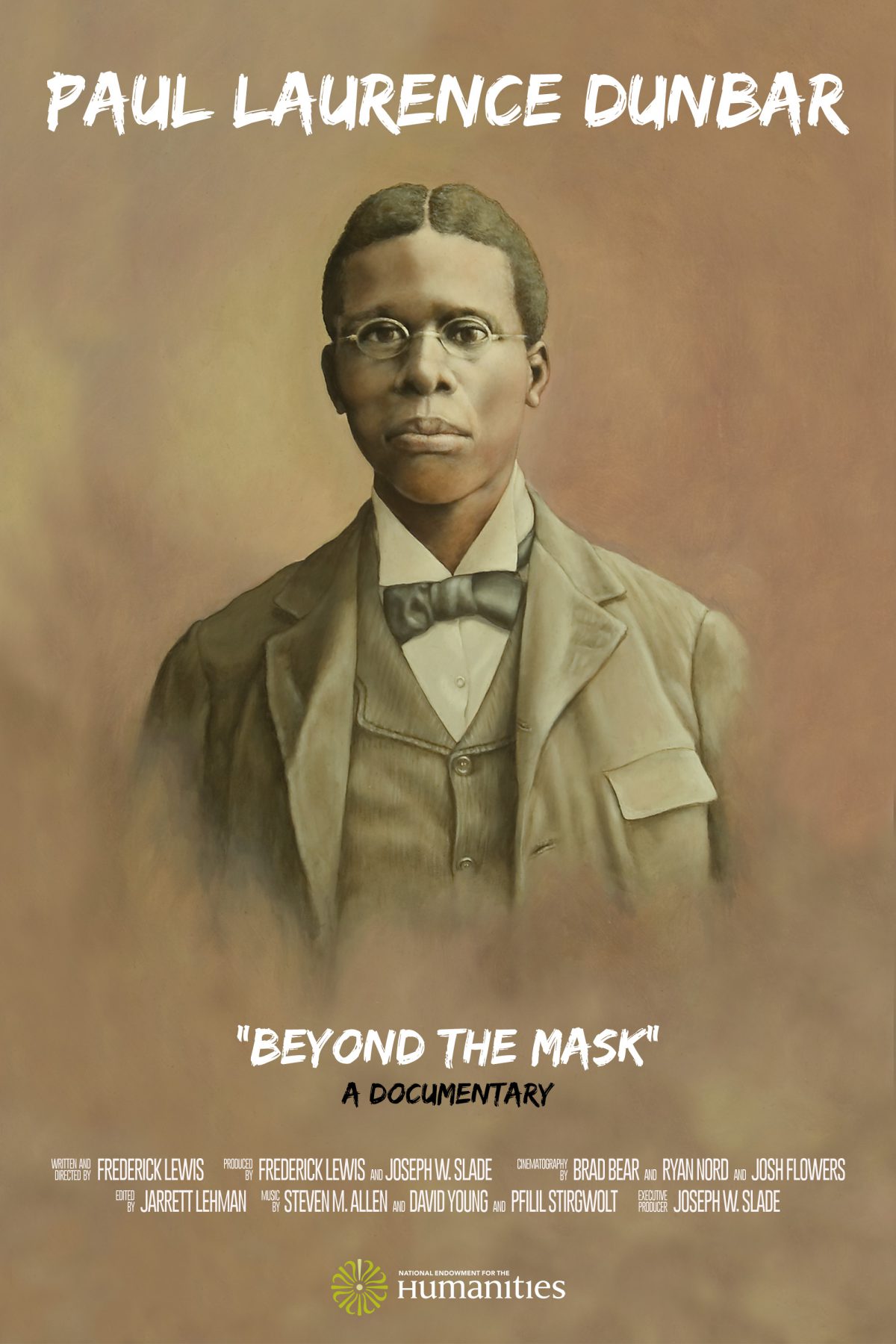The Ohio University Scripps College of Communication is proud to announce that the “Paul Laurence Dunbar: Beyond the Mask” documentary, a collaborative project between School of Media Arts & Studies faculty and the Central Region Humanities Center at Ohio University, has been accepted by PBS for broadcast by individual stations during Black History Month (February) and National Poetry Month (April).
“Paul Laurence Dunbar: Beyond the Mask,” a 2-hour feature, explores the life and legacy of Paul Laurence Dunbar, who was born in 1872 and died in 1906. Dunbar was the first African-American to achieve national fame as a literary artist. Born to former slaves in Dayton, Ohio, Dunbar wrote novels, plays, and essays but is known mainly for poems and short stories expressing black Americans’ voices and the challenges of their lives. He is best remembered for his poem “We Wear the Mask” and for lines from “Sympathy” that became the title of Maya Angelou’s autobiography “I Know Why the Caged Bird Sings.” Dunbar’s story is also the story of the African American experience around the turn of the century.
The project is a collaboration between two faculty members from the Scripps College of Communication’s School of Media Arts & Studies: Professor Emeritus Joseph Slade, co-producer and executive producer and emeritus director of the Central Region Humanities Center; and Associate Professor Frederick Lewis, writer, director, and co-producer.
Kyle P. Snyder, Lecturer & Outreach Coordinator in the School of Media Arts & Studies, served as Audio Post Production Coordinator & Engineer for “Paul Laurence Dunbar: Beyond the Mask” and led a team of students in the completion of the final deliverables.
More than 25 past and present students from the School of Media Arts & Studies also assisted with archival research, production, post production and musical composition. “No one could make a documentary of this scope without extensive collaboration, and we are grateful for all the help we received,” said Slade. “It has been a long but gratifying experience, especially when we consider the end result.”
The two-hour documentary utilizes narration, sound and music, vintage images and original footage to recount Dunbar’s life in greater detail than in any previous retelling and also includes extensive discussion of his influence on and legacy for contemporary writers, artists, dancers, musicians, scholars, and students.
“Writing a documentary isn’t just writing narration and stringing sound bites together,” said Lewis. “You are writing with words, images, sound effects, music, et cetera. Everything has to work in concert. What I really wanted to develop very carefully was the structure of the documentary–weaving contemporary segments about Dunbar’s legacy in with the archival materials that provide historical context and tell his biography.”
The documentary is the capstone of the Central Region Humanities Center’s Dunbar Project, a series of public and academic events taking place in Ohio and neighboring states since 2004. The Dunbar Project was launched by the CRHC in 2001 with funding from the National Endowment for the Humanities and the Ohio Humanities. Dr. Judith Yaross Lee, director of the Central Region Humanities Center and Distinguished Professor of Communication Studies, has directed the Dunbar Project since its start.
To date, “Paul Laurence Dunbar: Beyond the Mask” is scheduled to air on PBS stations in Ohio, Wisconsin, North Carolina, California, and the Virgin Islands. Locally, WOUB will broadcast the documentary on Tuesday, Feb. 14 at 8 p.m.
A free screening will be held at Case Western Reserve University on Thursday, Feb. 9 at 5 p.m. The documentary will also be shown at the Underground Railroad Museum and Freedom Center in Cincinnati on Sat., Feb. 11, at 11 a. m. Additional public screenings are being planned.
